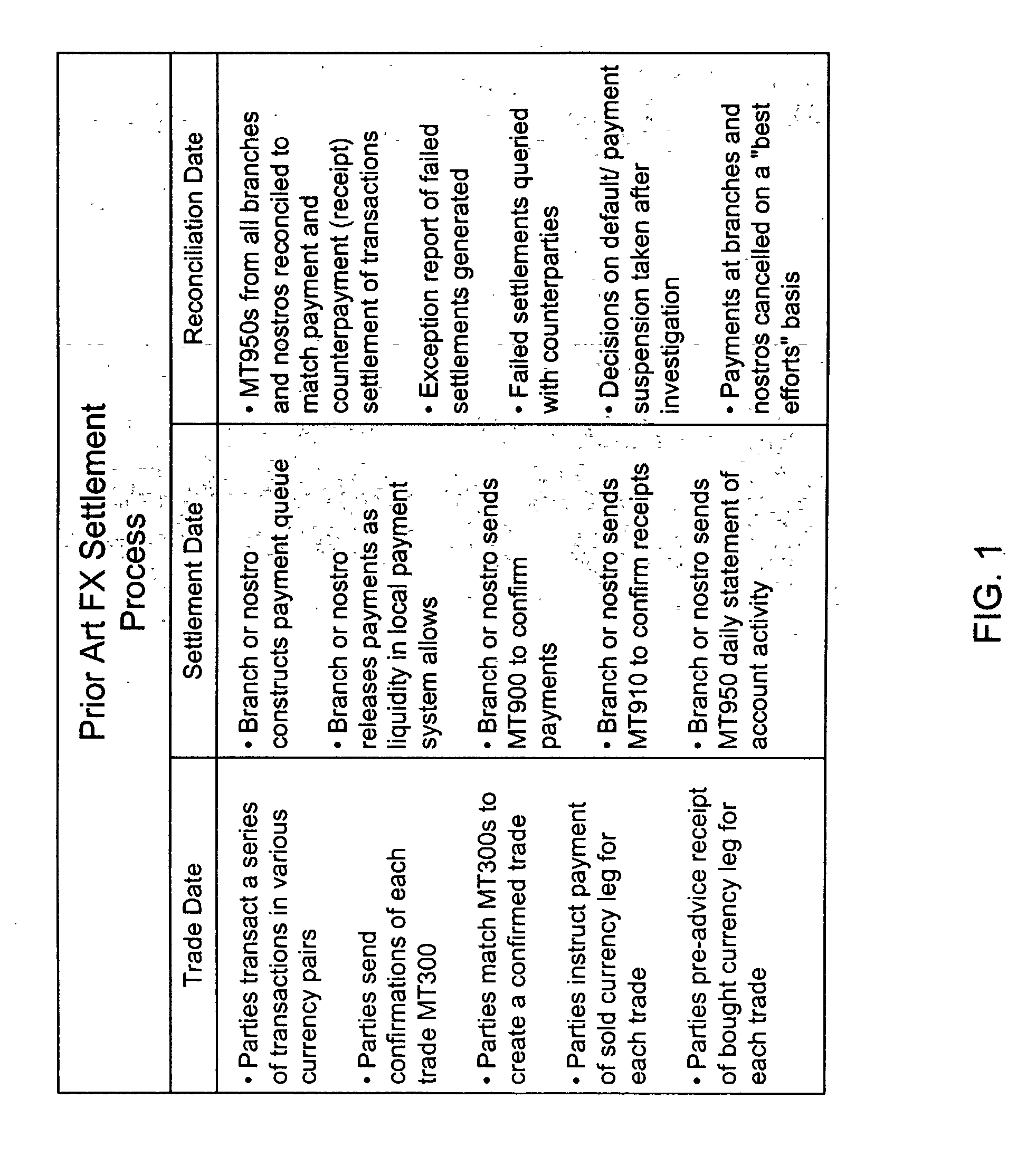Method of and system for mitigating risk associated with settling of foreign exchange and other payments-based transactions
a technology of foreign exchange and risk, applied in the field of methods and systems for mitigating payments risk, liquidity risk and systemic risk in the settlement of foreign exchange transactions and many other payments-based transactions, can solve the problems of substantial harm to financial market participants, suffer unexpected shortfall effects, and general limitation of participation in payment systems, so as to facilitate the liquidity of a payment system and facilitate the broad range of communication
- Summary
- Abstract
- Description
- Claims
- Application Information
AI Technical Summary
Benefits of technology
Problems solved by technology
Method used
Image
Examples
Embodiment Construction
[0133] Referring to the figures of FIG. 3 through 10 , embodiments of the present invention will be described in detail below, wherein like elements and structures will be indicated using like reference numerals.
[0134] In general, the Granular Payments Management (GPM) system of the present invention may be realized in a variety of ways depending on the enabling technology available at the time of realization and particular application requirements at hand. In particular, it is expressly recognised that standards for data interchange are evolving and that industry standard data formats and messaging protocols may be subject to amendment.
[0135] As shown in FIG. 3, the GPM System of the illustrative embodiment is shown comprising a Web-based network of client-server workstations on which Web-server and Web-linked interface applications are supported, and Third Party, User and Payment Bank Host Applications, and spatially distributed about the planet Earth in order to provide real-time...
PUM
 Login to View More
Login to View More Abstract
Description
Claims
Application Information
 Login to View More
Login to View More - R&D
- Intellectual Property
- Life Sciences
- Materials
- Tech Scout
- Unparalleled Data Quality
- Higher Quality Content
- 60% Fewer Hallucinations
Browse by: Latest US Patents, China's latest patents, Technical Efficacy Thesaurus, Application Domain, Technology Topic, Popular Technical Reports.
© 2025 PatSnap. All rights reserved.Legal|Privacy policy|Modern Slavery Act Transparency Statement|Sitemap|About US| Contact US: help@patsnap.com



